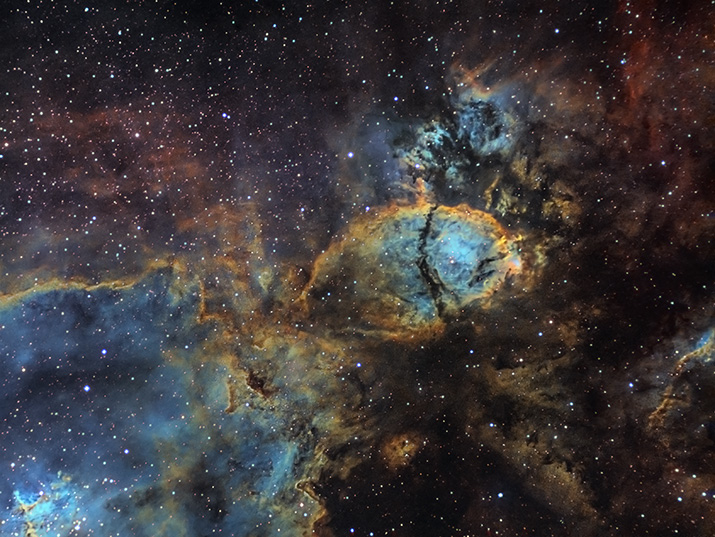
|
Date: Oct. 16-17-18, 2016 - Location: Davis Mountains west of Fort Davis, TX Telescope: Stellarvue SV-102ED - Mount: MI-250 - Camera: ST-8300M Exposure: SII - 540 min. Ha - 240 min. OIII - 440 min. R,G,B - 40 min. each Click on the image below to view at higher resolution. |

|
IC 1795 - The Fish Head Nebula, also known as the Northern Bear Nebula, is part of a huge star forming system of gas and dust located along the Perseus spiral arm of our Milky Way galaxy. The nebula is located in the constellation Cassiopeia approximately 6000 light-years from the Earth and is adjacent to the much larger Heart Nebula. The brighter region of IC 1795 is designated NGC 896 and is the home to many massive, young, stars. These stars radiate copious amounts of ultraviolet light. This UV radiation excites the surrounding gas and causes it shine much the same way as a neon light emits its colorful hues. The above image was assembled from exposures made through Sulfur II, Hydrogen Alpha, and Oxygen III filters. These exposures were combined with Sulfur II mapped to the red channel, Hydrogen Alpha mapped to the green channel, and Oxygen III mapped to the blue channel. This mapping is known as false color and is common with the many spectacular Hubble Space Telescope images. The stars were overlayed with normal color data from a separate RGB image.
|